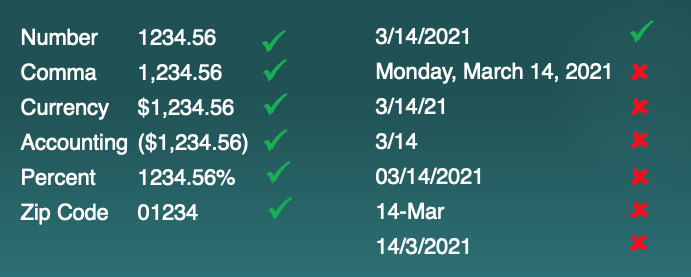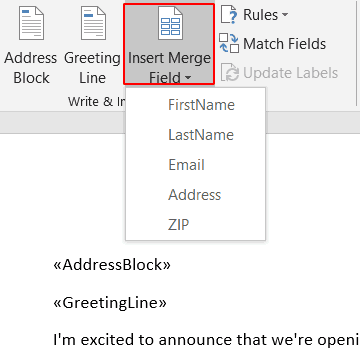

- #SAVE NAMES IN EXCEL FOR LETTER MERGE ON 2012 MAC HOW TO#
- #SAVE NAMES IN EXCEL FOR LETTER MERGE ON 2012 MAC SERIES#
top to bottom across the first column and then right to the next column, nest SEQUENCE in the TRANSPOSE function.
#SAVE NAMES IN EXCEL FOR LETTER MERGE ON 2012 MAC SERIES#
When populating a range of cells with sequential numbers, by default, the series always goes horizontally across the first row and then down to the next row, just like reading a book from left to right. To generate a descending sequential series, such that each subsequent value is less than the preceding one, supply a negative number for the step argument.įor example, to create a list of numbers starting at 10 and decreasing by 1, use this formula:įorce a two-dimensional sequence to move vertically top to bottom Make a decreasing (descending) sequence in Excel Though the basic SEQUENCE formula does not look very exciting, when combined with other functions, it takes on a whole new level of usefulness.
#SAVE NAMES IN EXCEL FOR LETTER MERGE ON 2012 MAC HOW TO#
How to create a number sequence in Excel - formula examples Any optional argument that is not set defaults to 1.The resulting array can be one-dimensional or two-dimensional, depending on how you configure the rows and columns arguments.So, be sure you have enough empty cells down and to the right of the cell where you enter the formula, otherwise a #SPILL error will occur. If the array of sequential numbers is the final result, Excel outputs all the numbers automatically in a so-called spill range.In Excel 2019, Excel 2016 and earlier versions, it does not work since those versions do not support dynamic arrays. The SEQUENCE function is only available with Microsoft 365 subscriptions.To efficiently do a sequence of numbers in Excel, please remember these 4 simple facts: Translated into plain English, our complete formula reads as follows: To generate a list of numbers with a specific increment step, define the step in the 4 th argument, 10 in our case: To start with a specific number, say 100, supply that number in the 3 rd argument: For instance, to populate 5 rows and 3 columns, you'd use this formula: If you'd like to fill a range of cells with sequential numbers, then define both the rows and columns arguments. To make a horizontal sequence, set the rows argument to 1 (or omit it) and define the number of columns, 8 in our case:

The results will spill in the other rows automatically. Where n is the number of elements in the sequence.įor example, to populate a column with 10 incremental numbers, type the below formula in the first cell (A2 in our case) and press the Enter key: The result is a dynamic array that "spills" into the specified number of rows and columns automatically. It is a new dynamic array function introduced in Microsoft Excel 365. The SEQUENCE function in Excel is used to generate an array of sequential numbers such as 1, 2, 3, etc. Generate an ascending or descending sequence of random integers.Force a two-dimensional sequence to move vertically (row-wise).Make a decreasing (descending) sequence.How to create a number sequence in Excel - formula examples.Basic formula to create a number sequence in Excel.If you have a more specific task in mind, then use the SEQUENCE function, which is specially designed for this purpose. In modern Excel, you can make a simple number series in a flash with the Auto Fill feature. The times when you had to put numbers in sequence in Excel manually are long gone. Additionally, we'll show you how to auto generate a series of Roman numbers and random integers - all by using a new dynamic array SEQUENCE function. In this tutorial, you will learn how to create a number sequence in Excel with formulas.


 0 kommentar(er)
0 kommentar(er)
